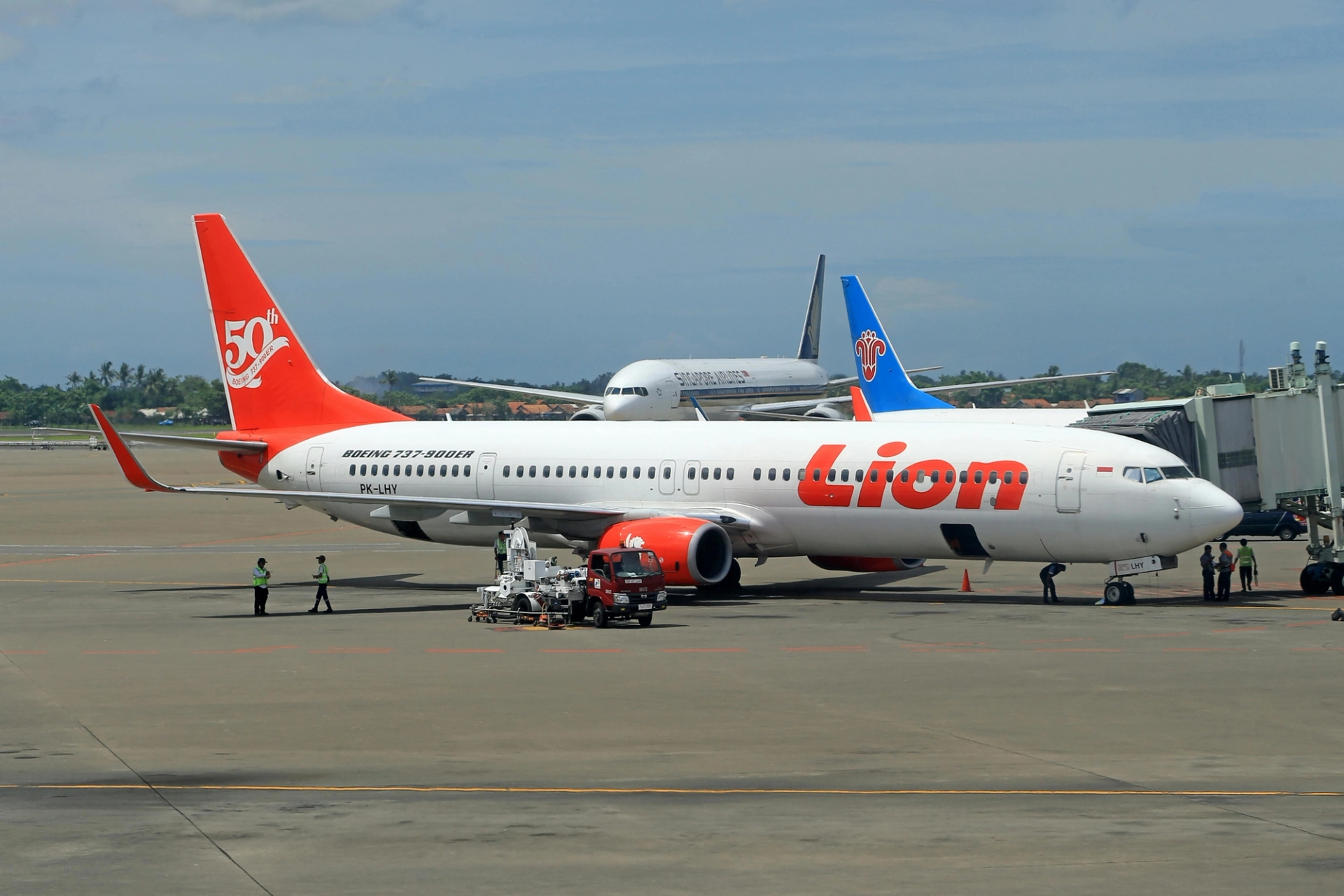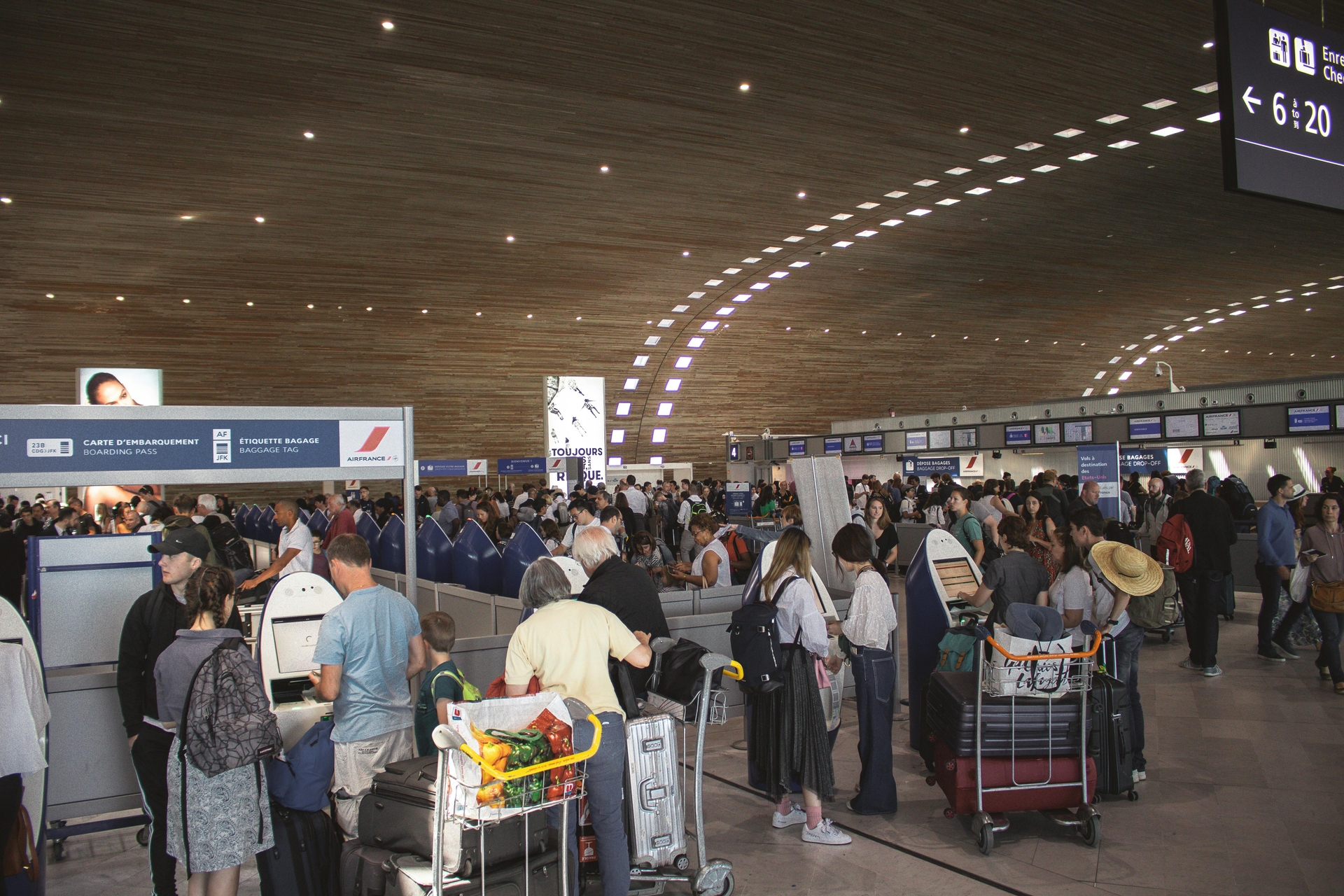
AeroGenie — Uw intelligente copiloot.
Wat is MEL-management in de luchtvaart en hoe is het gerelateerd aan de toeleveringsketen?
juni 26, 2025
MEL-gegevens veranderen de manier waarop luchtvaartmaatschappijen plannen, bevoorraden en compliant blijven. Verlaag het AOG-risico en leg zwakke punten in SLA's van leveranciers bloot. Luchtvaartmaatschappijen zetten uitstelpatronen om in strategische actie, ondersteund door inzichten van de FAA, ICAO, EASA en Deloitte.
Wat is MEL-management in de luchtvaart?
MEL staat voor Minimum Equipment List, en het is een van de meest verkeerd begrepen maarcruciaalHulpmiddelen in de luchtvaart. Geruisloos ondersteunt het MRO, bedrijfsvoering, operationele processen en compliance.
Een MEL is in essentie een document dat specifiek is voor een bepaald vliegtuig of een bepaalde vloot en waarin de vereisten voor de uitrusting worden beschreven.Er staat beschreven welke vliegtuigapparatuur mogelijk niet functioneel is, maar toch nog aan de veiligheidseisen voldoet.
In veel opzichten is de MEL een noodplan. In plaats van een vliegtuig aan de grond te houden vanwege één defect onderdeel, beschrijft de MEL onder welke omstandigheden en hoe lang bepaalde niet-essentiële apparatuur kan worden uitgesteld voor reparatie, zodat het vliegtuig tot die tijd kan blijven vliegen.
Belangrijk is dat een MEL isoperator-specificen goedgekeurd door een nationale luchtvaartautoriteit, zoals de FAA of EASA. Hun goedkeuring is gebaseerd op een breder referentiedocument: de Master Minimum Equipment List (MMEL).
De MMEL, ontwikkeld door vliegtuigfabrikanten en goedgekeurd door de autoriteiten, schetst de regels en grenzen waarbinnen exploitanten hun eigen MEL's op maat kunnen ontwikkelen. De MEL wordt vervolgens onderdeel van de specifieke operationele handleidingen van luchtvaartmaatschappijen. De MEL moet de daadwerkelijke apparatuurconfiguraties, gevlogen routes en onderhoudscapaciteiten van een luchtvaartmaatschappij weerspiegelen.Internationale Burgerluchtvaartorganisatie).
Met andere woorden, de MMEL zegt in grote lijnen: "Dit is wat er is toegestaan als een onderdeel kapotgaat", terwijl de MEL de reikwijdte beperkt tot: "Dit is wat we daadwerkelijk kunnen toestaan als een onderdeel kapotgaat op basis van onze mensen en processen."
Wat is MEL-management in de luchtvaart?
De regelgevende ruggengraat: FAA, ICAO en EASA
Federale Luchtvaartadministratie (FAA)
In de Verenigde Staten definiëren 14 CFR Part 91.213 en Part 121.628 hoe exploitanten een MEL kunnen gebruiken in plaats van de handleidingen van de vliegtuigfabrikanten te volgen. Elke Amerikaanse luchtvaartmaatschappij die met defecte apparatuur wil vliegen, moet voor elk vliegtuigtype een door de FAA goedgekeurde MEL hebben (FAA).
Internationale Burgerluchtvaartorganisatie (ICAO)
Internationaal stelt de Internationale Burgerluchtvaartorganisatie (ICAO) in Bijlage 6, Deel I, normen vast voor commerciële luchtvervoersoperaties. ICAO benadrukt dat MEL's moeten worden afgestemd op de MMEL en gepersonaliseerd moeten zijn voor de omgeving van de operator.
Agentschap van de Europese Unie voor de veiligheid van de luchtvaart (EASA)
Ondertussen heeft het Agentschap van de Europese Unie voor de veiligheid van de luchtvaart (EASA) in Europa soortgelijke regelgeving aangenomen, die vereist dat vlootbeheerders actuele minimumeisen voor luchtvaartemissies (MEL's) indienen en bijhouden, die rekening houden met de veranderende operationele en onderhoudssituatie.
Deze drievoudige regelgevende controle zorgt ervoor dat MEL's actueel blijven en voortdurend worden herzien op basis van de laatste servicebulletins, luchtwaardigheidsrichtlijnen en updates van de fabrikant (Deloitte).
Wat is MEL-management in de luchtvaart?
Hoe MEL-management de strategie voor de toeleveringsketen in de luchtvaart verbetert
Naast onderhoud en veiligheid wordt de Minimum Equipment List (MEL) steeds meer onderdeel van de bredere supply chain-discussie. Luchtvaartmaatschappijen gebruiken de MEL voor verbeterde voorraadplanning en -responsiviteit.
Goed geïntegreerde MEL-inzichten helpen luchtvaartbedrijven om op de meest effectieve manier prioriteiten te stellen in hun middelen, knelpunten in de toeleveringsketen te vermijden en te reageren op tekorten aan onderdelen (Deloitte).
MEL-uitstel als vroege waarschuwingsindicatoren
Elk MEL-uitstel fungeert als een realtime waarschuwing voor stress in de toeleveringsketen. Vloten die de trends in uitstel voor vliegtuigen en routes monitoren, kunnen vaststellen waar en wanneer bepaalde onderdelen defect raken of bijna verouderd zijn, ruim voordat een volledige vervanging van het onderdeel nodig is.Internationale Burgerluchtvaartorganisatie).
Dit is vooral handig bij oudere wagenparken, wagenparken die niet meer onder de garantie vallen of die in corrosieve omgevingen vliegen, zoals kust- en maritieme omgevingen of gebieden met veel vervuiling. Hierdoor kan de degradatie van componenten en elektrische systemen worden versneld.
Ondersteuning van leveranciersverantwoording en SLA's
Inkoopteams die MEL-trends analyseren die gekoppeld zijn aan specifieke artikelnummers of leveranciers, hebben een voorsprong bij het beoordelen van de betrouwbaarheid van leveranciers. Als een leverancier van avionica bijvoorbeeld een hoger dan gemiddeld MEL-uitstelpercentage heeft voor een bepaald model, kan dat inzicht worden gebruikt om service level agreements (SLA's) te heronderhandelen of strengere kwaliteitscontroles te eisen (Deloitte).
Verminderen van AOG-incidenten door MEL-gekoppelde planning
Vliegtuig-op-de-grond (AOG)-situaties vormen de meest kostbare verstoring in elke luchtvaartoperatie. MEL-gegevens kunnen de AOG-frequentie verminderen door planners voldoende tijd te geven om problemen op te lossen voordat kritieke limieten worden bereikt.FAA).ToeleveringsketenTeams die de behoefte aan onderdelen voorspellen, kunnen met gegevens van MEL-uitstel verzendschema's aanpassen, reserveonderdelen opnieuw toewijzen of reparaties versnellen om te voorkomen dat vliegtuigen aan de grond blijven.
Regionale hubs en MEL-gestuurde onderdelendistributie
Niet elk onderdeel hoeft op elke luchthaven te worden opgeslagen. MEL-activiteiten helpen bedrijven strategisch te bepalen welke onderdelen voor welk vliegtuig waar bewaard moeten worden. Als hulpaggregaten (APU's) bijvoorbeeld vaker uitvallen in koudere klimaten, kan het regionaal opslaan van deze onderdelen duizenden euro's besparen op spoedverzendingen. MEL's helpen bij het rationaliseren van de opslag van voorraden op basis van patronen in de praktijk (Deloitte).
Wat is MEL-management in de luchtvaart?
MEL-beheer in lean inventory-omgevingen
Luchtvaartmaatschappijen enMROLeveranciers werken vaak met lean- of just-in-time-voorraadmodellen om de kosten laag te houden, maar MEL-gegevens helpen voorkomen dat deze strategie averechts werkt door de voorspelbaarheid en bufferplanning te verbeteren (Internationale Burgerluchtvaartorganisatie).
Prioriteit geven aan schaarse onderdelen
Wanneer er een beperkt aantal onderdelen beschikbaar is, kunnen MEL-gegevens helpen ervoor te zorgen dat de meest urgente behoeften als eerste worden aangepakt. Teams die analyseren hoe dicht elk uitstel bij de deadline voor herstel ligt, kunnen nauwkeurig bepalen welke onderdelen moeten worden verzonden of geïnstalleerd op basis van zowel de veiligheids- als de operationele impact (FAA).
Het voeden van realtime inkoopsystemen
E-procurementtools van de volgende generatie kunnen MEL-gegevens verwerken om inkooporders te initiëren, de uitvoering ervan te volgen en sourcingworkflows te escaleren (DeloitteHierdoor worden handmatige overdrachten verminderd en wordt ervoor gezorgd dat MEL-gerelateerde onderdelen proactief worden aangepakt, soms zelfs voordat het vliegtuig landt.
Wat is MEL-management in de luchtvaart?
MEL en duurzaamheid in de toeleveringsketen
Duurzaamheid en naleving zijn nauw met elkaar verbonden. MEL-strategieën kunnen ook groenere logistiek en slimmer gebruik van onderdelen ondersteunen, vooral wanneer ze geïntegreerd zijn in onderhoudsprognoseplatforms (Deloitte).
Afval vermijden door slimmer gebruik van onderdelen
In plaats van te veel te bestellen of oudere componenten preventief te schrappen, zorgen MEL-uitstelregelingen ervoor dat luchtvaartmaatschappijen onderdelen veilig kunnen gebruiken tot het einde van hun levenscyclus. Dit vermindert onnodig afval en sluit aan bij de duurzaamheidsdoelstellingen van zowel ICAO als EASA (Internationale Burgerluchtvaartorganisatie).
Het verlagen van de CO2-uitstoot door proactieve scheepvaart
Voor lastminute AOG-verzendingen is vaak luchtvracht nodig, wat koolstofintensief en duur is. MEL-gestuurde planning maakt het mogelijk om meer zendingen over land, in bulk of via geconsolideerde routes te laten plaatsvinden, waardoor zowel de uitstoot als de kosten worden verlaagd.Deloitte).
Wat is MEL-management in de luchtvaart?
MEL-gegevens omzetten in voorspellende supply chain-intelligentie
Automatiseer MRO-sourcingworkflows met MEL-analyses
Wanneer uitstel wordt geregistreerd, gebruiken AI-systemen zoalsePlaneAIKan automatische sourcing-workflows activeren om onderdeelbestellingen te genereren, voorraden van meerdere leveranciers te controleren en risico's te signaleren op basis van historische doorlooptijden. Dit vermindert de downtime en stelt luchtvaartmaatschappijen in staat om van een reactieve naar een meer voorspellende inkoop te gaan (Deloitte).
Gebruik MEL-patronen voor meerdere vloten om strategische aankopen te informeren.
Wanneer luchtvaartmaatschappijen gemengde vloten exploiteren (bijvoorbeeld Airbus en Boeing), kunnen MEL-gegevens platformspecifieke zwakke punten aan het licht brengen. Inkoopteams kunnen vervolgens aankopen groeperen om betere tarieven te onderhandelen of prioriteit te geven aan multiplatformleveranciers met betere prestaties (FAA).
Gebruik MEL-gegevens voor de vernieuwingsstrategie van uw vloot
Terugkerende MEL-uitstel geeft vaak aan dat componenten of complete vliegtuigframes verouderd zijn en daardoor niet meer kosteneffectief gerepareerd kunnen worden. Door deze trends te aggregeren, kunnen leidinggevenden slimmere langetermijninvesteringen doen in vervangingen, upgrades of retrofits (Internationale Burgerluchtvaartorganisatie).
Wat is MEL-management in de luchtvaart?
Waarom MEL-beheer belangrijk is voor vliegtuigonderhoud
MEL-beheer staat aan de frontlinie van de uitvoering van de toeleveringsketen.Wanneer een onderdeel defect raakt, helpen MEL-protocollen onderhoudsteams en vluchtoperators om snel en weloverwogen beslissingen te nemen die gevolgen hebben voor inkoop, logistiek en voorraad. Kan deze vlucht legaal en veilig vertrekken? Welke beperkingen moeten er dan worden opgelegd? Hoe lang kunnen we deze reparatie maximaal uitstellen en hebben we de onderdelen klaar voor reparatiewerkzaamheden nadat dat tijdsbestek is verstreken?
Die besluitvorming is afhankelijk van coördinatie tussen afdelingen. Onderhoudsbeheer, dispatching, vluchtuitvoering, engineering en toeleveringsketen moeten de MEL allemaal consistent interpreteren. Fouten of tekortkomingen in het toezicht kunnen leiden tot overtredingen van de regelgeving, kostbare vertragingen of veiligheidsovertredingen (FAAIn de praktijk omvatten MEL-items vaak operationele procedures (wat de bemanning anders moet doen als bepaalde apparatuur niet werkt), onderhoudsprocedures (wat grondpersoneel moet doen om de staat van de apparatuur te verifiëren) en tijdslimieten.
Uitgestelde problemen moeten worden bijgehouden in vliegtuiglogboeken en onderhoudscontrolesystemen, elk met specifieke herstelintervallen, vaak gecategoriseerd als A (aangepast), B (3 dagen), C (10 dagen) of D (120 dagen), afhankelijk van de ernst.
Wat is MEL-management in de luchtvaart?
Wereldwijde regelgeving en het MEL-kader
MEL's worden beheerd door verschillende internationale instanties. In de VS worden MEL's geautoriseerd volgens de OpSpecs van elke operator en moeten ze consistent zijn met de Master Minimum Equipment List (MMEL) die door de FAA voor elk vliegtuigmodel is gepubliceerd. De FAA definieert een MEL als een document "ontwikkeld door een operator voor een specifiek vliegtuig en goedgekeurd door de FAA" (FAA).
De ICAO benadrukt daarentegen complementaire MMEL- en MEL-processen en definieert gestandaardiseerde procedures voor de categorisering van items, uitstelperiodes en verantwoordelijkheden van bemanningsleden. De ICAO-handleiding schetst een consistent format voor MEL's wereldwijd ter ondersteuning van grensoverschrijdende operaties (Internationale Burgerluchtvaartorganisatie).
De Europese EASA hanteert een vergelijkbare gestructureerde aanpak, waarbij MEL's moeten worden afgestemd op de MMEL en moeten worden opgenomen in de Continuous Airworthiness Management Exposition (CAME) van elke luchtvaartmaatschappij. Luchtvaartmaatschappijen die internationaal opereren, moeten zich aan alle drie de systemen houden.
Wat is MEL-management in de luchtvaart?
Digitale MEL-systemen: waar luchtvaarttechnologie en naleving samenkomen
Digitalizationverandert de manier waarop luchtvaartmaatschappijen MEL's beheren en ernaar handelen. In plaats van het handmatig controleren van papieren mappen en spreadsheets, hebben onderhouds- en vluchtbemanningen nu toegang tot MEL-gegevens via geïntegreerde elektronische dossiers, onderhoudsplanningssystemen en mobiele apps. Deze gedigitaliseerde systemen verbeteren de transparantie, verminderen menselijke fouten en maken realtime updates mogelijk over uitgestelde items en de reparatiestatus.
Geavanceerdere platforms combineren MEL-data met voorspellende analyses, waardoor inzicht ontstaat in trends binnen vloten en regio's. Als een bepaald hoogtemetermodel bijvoorbeeld een piek in uitstel op meerdere vliegtuigen laat zien, kunnen engineeringteams de onderliggende oorzaken achterhalen en systemische problemen oplossen. Deze inzichten ondersteunen ook slimmere beslissingen over voorraadaanvulling en leveranciersonderhandelingen, vooral wanneer onderhoudsteams kunnen voorspellen wanneer MEL-trends aanleiding geven tot vervanging van onderdelen of extra inspecties (Deloitte).
Op supply chain-niveau creëert deze transparantie een vliegwieleffect: onderdelenlogistiek kan nauwkeuriger worden geprioriteerd, downtime-vensters worden voorspelbaarder en operators krijgen meer onderhandelingsmacht bij leveranciers door specifieke betrouwbaarheidsproblemen in alle MEL-categorieën aan te kaarten.
Wat is MEL-management in de luchtvaart?
Lessen uit andere sectoren: MEL als leersysteem
Interessant genoeg is MEL ook een acroniem dat buiten de luchtvaart wordt gebruikt: Monitoring, Evaluatie en Leren. In internationaal ontwikkelings- en duurzaamheidswerk volgen deze MEL-kaders prestaties, evalueren ze impact en bevorderen ze aanpassingsvermogen.Resonantie Global).
Hoewel dit verschillende sectoren zijn die verschillende MEls gebruiken, is het ‘lerende’ aspect van internationale ontwikkeling goed toepasbaar op de luchtvaart.
In beide interpretaties is MEL zowel een nalevingsmechanisme als een feedbacksysteem. Door systematisch te evalueren welke componenten het vaakst, hoe vaak, onder welke omstandigheden en door welke knelpunten in de toeleveringsketen het vaakst falen, kunnen luchtvaartmaatschappijen training, voorraadbeheer, inkoop en zelfs vliegtuigconfiguraties aanpassen.Elk MEL-item wordt zo een gegevenspunt, elk uitstel een les en elke les een zetje in de richting van een grotere operationele veerkracht.
Met digitale systemen kunnen MEL-gegevens worden gekoppeld aan dashboards die worden gebruikt door zowel MRO-teams als supply chain managers.
Wat is MEL-management in de luchtvaart?
Veelgestelde vragen
Waarvoor dient een Minimum Equipment List (MEL)?
Een MEL is een door de FAA goedgekeurd, operatorspecifiek document dat is ontworpen om vliegtuigen veilig te laten vliegen wanneer een of meer instrumenten of systemen niet werken. De MEL beschrijft onder welke omstandigheden een vliegtuig weer operationeel kan blijven tot een toekomstige reparatie, waardoor onnodige gronding van een vlucht wordt voorkomen.
Hoewel elke exploitant zijn eigen MEL bepaalt, moet deze voldoen aan de bredere richtlijnen van de fabrikant (de MMEL) en aan het overheidstoezicht van de FAA en andere internationale instanties.
Welke regelgeving geldt voor MEL's in de VS?
In de VS vallen MEL's onder 14 CFR Part91.213 en Part121.628, die een door de FAA goedgekeurde MEL vereisen als onderdeel van de OpSpecs (Operations Specification) van een operator. Vliegtuigspecifieke MEL's vallen ook onder FAA AC 120-125 (FAA).
Wie keurt een MEL voor een luchtvaartmaatschappij of operator goed?
In de VS stellen luchtvaartmaatschappijen hun eigen MEL op basis van de MMEL op en dienen deze in als onderdeel van hun Operations Specifications (OpSpecs). Deze moet vervolgens worden goedgekeurd door meerdere FAA-functionarissen, waaronder de Principal Operations Inspector, de Principal Maintenance Inspector en de Principal Avionics Inspector (Luchtvaartprofessionals).
Welke rol spelen moderne ERP's bij MEL-gebaseerde supply chain-optimalisatie?
Moderne ERP-platformen worden steeds vaker geïntegreerd met MEL's en supply chain planning. Luchtvaartmaatschappijen die MEL-uitstelgegevens in hun ERP integreren, kunnen de inkoopbehoeften nauwkeuriger voorspellen en vervullen. Deze afstemming zorgt voor minder onverwachte tekorten en beter inzicht in de levenscycli van onderdelen.
In combinatie met AI-platforms zoalsePlaneAI, deze ERP-integratiesGa een stap verder. ePlaneAI kan MEL-gegevens verwerken en deze contextualiseren voor de prestaties van de gehele vloot, de betrouwbaarheid van leveranciers en historische doorlooptijden. MRO- en inkoopteams kunnen de vraag naar onderdelen nauwkeuriger voorspellen, terugkerende storingen sneller signaleren, de hoofdoorzaken achterhalen en oplossingsworkflows activeren voordat een AOG-incident optreedt.
In plaats van complexiteit toe te voegen, systemen zoalsePlaneAIERP-gebruikers helpen om slimmer te werken met de gegevens en technologiestacks die ze al hebben, en zo de cirkel rond te maken tussen MEL-naleving en supply chain-acties.
Wat is MEL-management in de luchtvaart?
MEL-management: de weg vooruit
In de luchtvaart lijken veiligheid en efficiëntie vaak met elkaar in tegenspraak, maar MEL-management overbrugt die kloof. Het geeft luchtvaartmaatschappijen de flexibiliteit om veilig te blijven vliegen en tegelijkertijd strikte reparatieprotocollen te handhaven, vluchtverstoringen en catastrofale omzetverliezen te minimaliseren en achterstanden in te halen. MEL's vormen een ongebruikte goudmijn voor logistieke informatie.
Omdat de sector te maken krijgt met druk om oudere vliegtuigen in dienst te houden, strengere regels voor duurzaamheid en een krappe personeelsbezetting bij het onderhoudspersoneel, wordt een sterke MEL-strategie nog belangrijker.
Elke dag,ePlaneAIhelpt luchtvaartmaatschappijen om op een eenvoudigere, snellere en kostenefficiëntere manier aan de regelgeving te voldoen.AI-gestuurde MRO- en supply chain-oplossingenMEL-gegevens integreren in voorspellende logistiek, onderhoudsvoorspellingen en inzichten over meerdere vloten.
Laten we verbonden data omzetten in strategische, concurrerende actie.Neem contact met ons opom te zien hoe wij MEL-naleving omzetten in een concurrentievoordeel.
Trends in luchtvaartonderhoud die in onzekere omstandigheden aan momentum kunnen winnen
Vliegtuigen blijven langer in gebruik, toeleveringsketens zijn een kruitvat en de technologie ontwikkelt zich van de ene op de andere dag. Ontdek de onderhoudstrends die aan populariteit winnen en wat ze betekenen voor exploitanten die in de lucht en winstgevend willen blijven.

October 2, 2025
De juiste vliegtuigonderdelen kiezen met schadetolerantieanalyse
De toekomst van luchtvaartveiligheid draait om de onderdelen. Authentieke, traceerbare onderdelen zorgen voor optimale schadetolerantie en prestaties van vloten, voor maximale veiligheid en inkoopefficiëntie.

September 30, 2025
Hoe u nieuwe luchtvaartmarkten betreedt: de complete gids voor onderdelenleveranciers
Betreedt u nieuwe luchtvaartmarkten? Ontdek hoe leveranciers de vraag kunnen analyseren, PMA-onderdelen kunnen beheren en vertrouwen kunnen opbouwen bij luchtvaartmaatschappijen. Een complete gids voor wereldwijde groei.

September 25, 2025
Vijf marketingstrategieën voor de luchtvaart die u kunt gebruiken om aan wereldwijde luchtvaartmaatschappijen te verkopen
Luchtvaartmaatschappijen worden geconfronteerd met krimpende marges en stijgende verwachtingen. Ontdek hoe topstrategieën – dynamische aanbiedingen, partnerschappen, personalisatie en meer – deals kunnen sluiten met wereldwijde luchtvaartmaatschappijen.
